
Here’s the latest roadmap of where the Grand Pkwy. currently exists (in green) and where it plans to go (yellow) as it assumes its full, 184-mile circumference. Construction on segments H and I-1 — which serve Liberty and Chambers counties — has been in progress since last year, although it wasn’t until last week that the federal government decided to chip in for it with a $605 million loan to the public nonprofit that’s behind the highway’s construction (a companion to the $840.6 million loan the feds arranged to fund the first 5 segments of the road). That’ll cover about a third of total $1.9 billion pricetag for the 2 northeastern segments, reports News 88.7’s Gail Delaughter. Construction on them is scheduled to wrap up in 2022.
Down south, work on segments C and B remains in the planning stage — and in the case of segment A, the indefinitely stalled stage. If TxDOT were to consider building that all-but-dead portion of the parkway between State Hwy. 146 to I-45 however, it could begin as far north as Kemah or as far south as Texas City.
- Houston’s Grand Parkway Receives $605 Million Federal Loan For Further Expansion [Houston Public Media]
Map: TxDOT


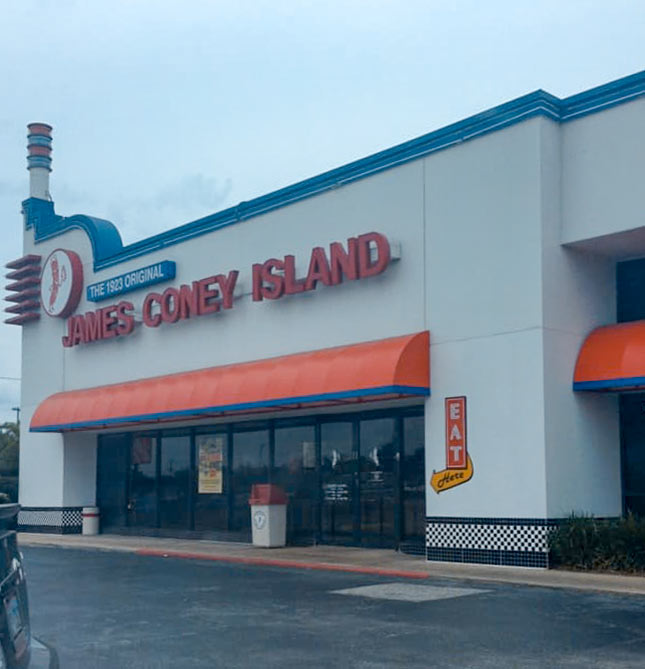

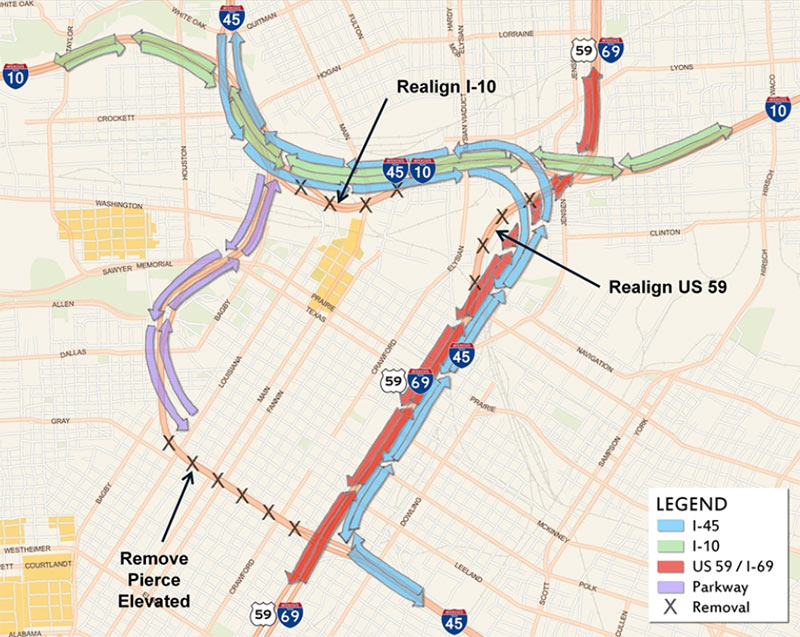 “I’ve noticed a trend in lower Fifth Ward to start building or planning to build in the path of the upcoming I-45 reroute,” writes a Swamplot reader. “Is there a chance that developers can make more money on their buyout if they have developed plans?” Developed or not, there’s certainly been some action along the right of way that TxDOT plans to crater for the new highway segment — like that
“I’ve noticed a trend in lower Fifth Ward to start building or planning to build in the path of the upcoming I-45 reroute,” writes a Swamplot reader. “Is there a chance that developers can make more money on their buyout if they have developed plans?” Developed or not, there’s certainly been some action along the right of way that TxDOT plans to crater for the new highway segment — like that 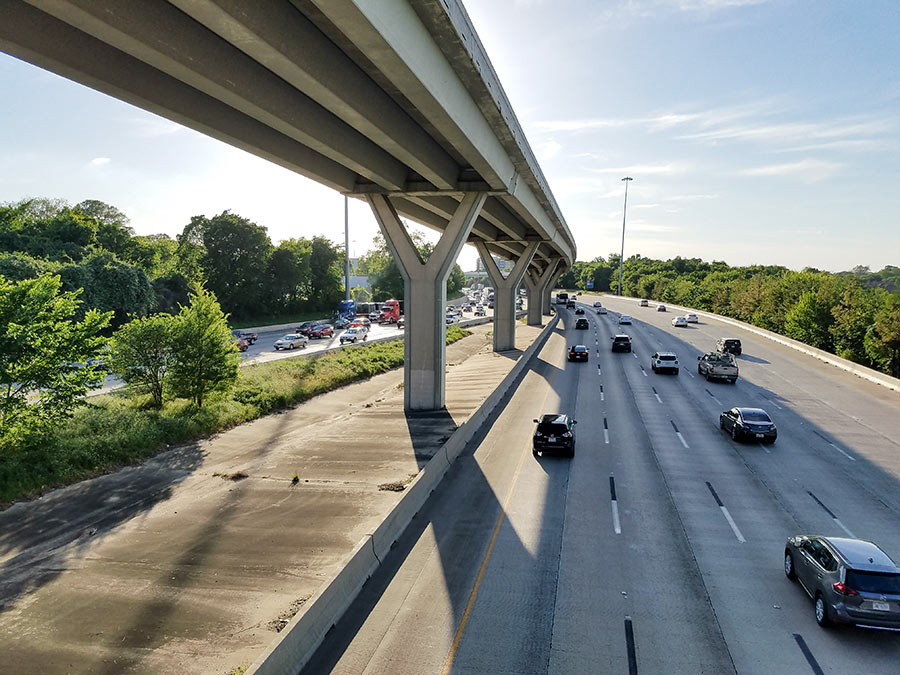 “The sign mentioned in the posting is a joke — it’s small, off to the side, partially obscured, and it is not readily apparent what it’s referring to. Worse than that, it is 2 miles ahead of the 610 interchange, and 7 miles ahead of the Houston Ave. overpass. It is nowhere close to a sufficient or effective system, and along with the new low clearance signs inside the Loop, has every appearance of a band-aid solution to something that needs a more comprehensive approach.” [
“The sign mentioned in the posting is a joke — it’s small, off to the side, partially obscured, and it is not readily apparent what it’s referring to. Worse than that, it is 2 miles ahead of the 610 interchange, and 7 miles ahead of the Houston Ave. overpass. It is nowhere close to a sufficient or effective system, and along with the new low clearance signs inside the Loop, has every appearance of a band-aid solution to something that needs a more comprehensive approach.” [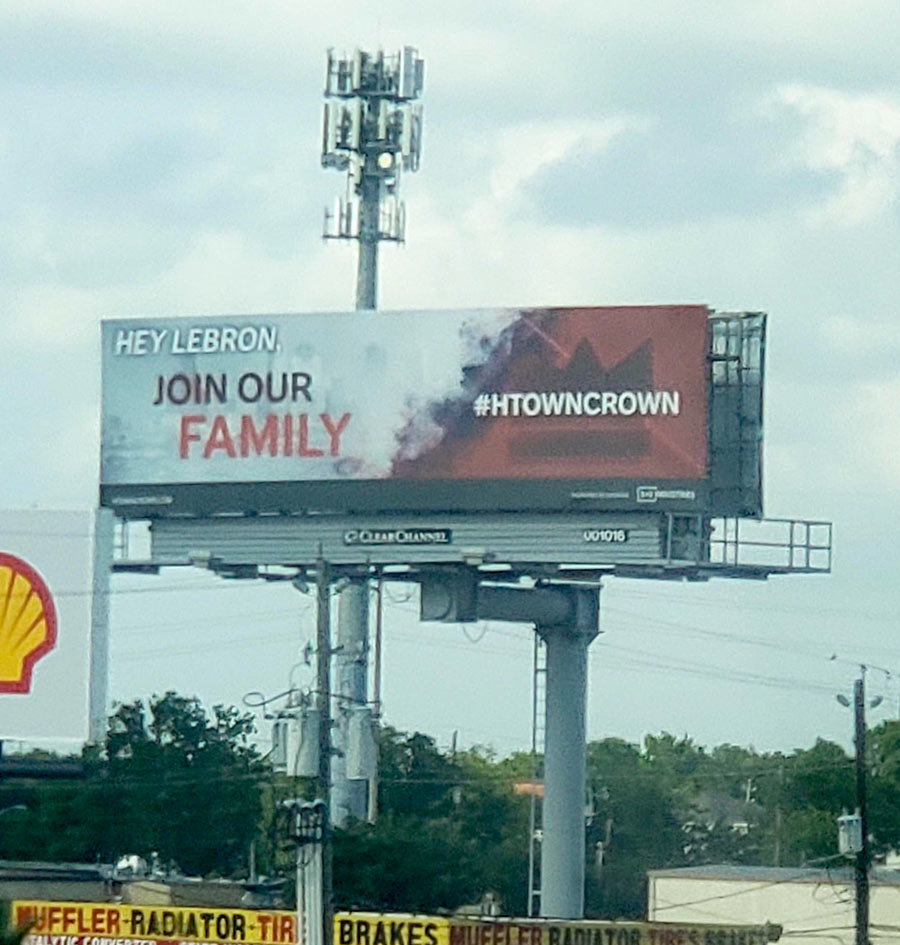 “A lot of times, players recruit players,” Rockets fan Greg Andrews tells the Chronicle’s Maggie Gordon, “Teams recruit players. And now, what I’d like to see is fans recruit players.†That’s what the 36-year-old oil-and-gas equipment executive hopes to do with the
“A lot of times, players recruit players,” Rockets fan Greg Andrews tells the Chronicle’s Maggie Gordon, “Teams recruit players. And now, what I’d like to see is fans recruit players.†That’s what the 36-year-old oil-and-gas equipment executive hopes to do with the 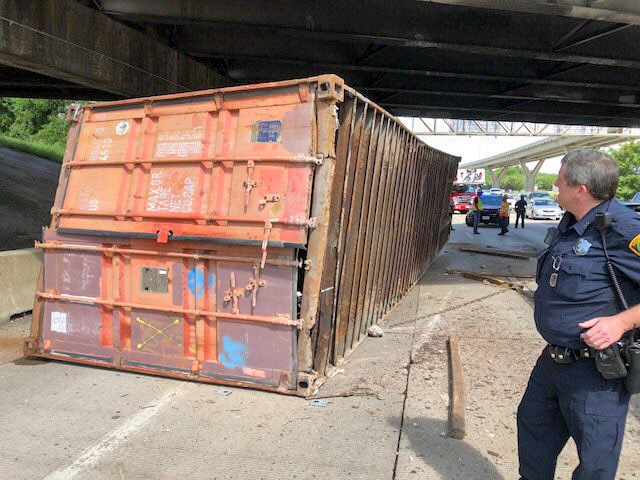

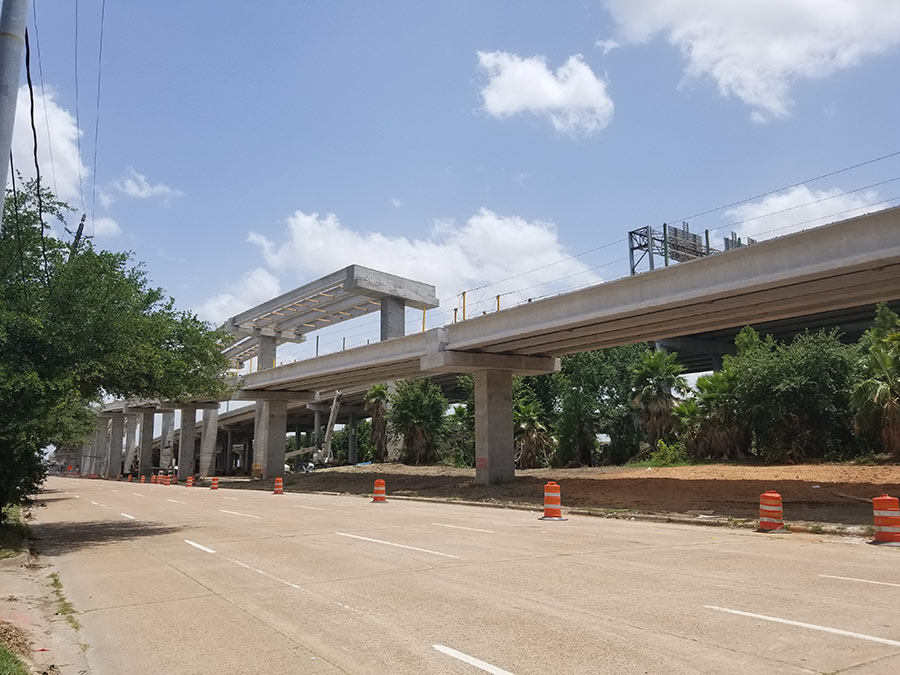

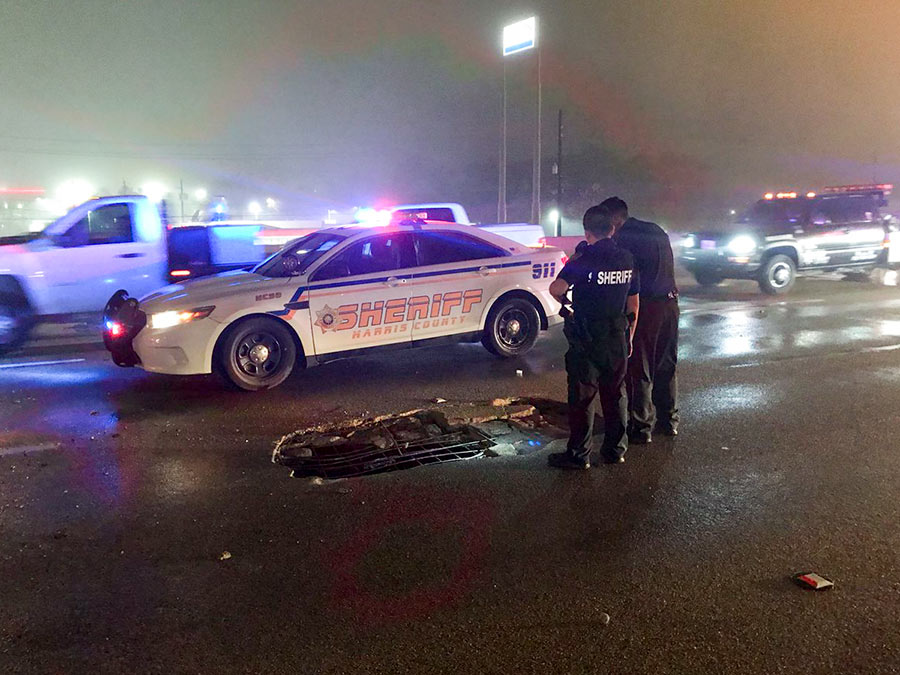 Over the weekend, TxDOT made temporary repairs to a stretch of the Eastex Fwy. that crosses over Little York Rd. by pouring a “hot mix” of asphalt over a portion the roadway, Meagan Flynn
Over the weekend, TxDOT made temporary repairs to a stretch of the Eastex Fwy. that crosses over Little York Rd. by pouring a “hot mix” of asphalt over a portion the roadway, Meagan Flynn 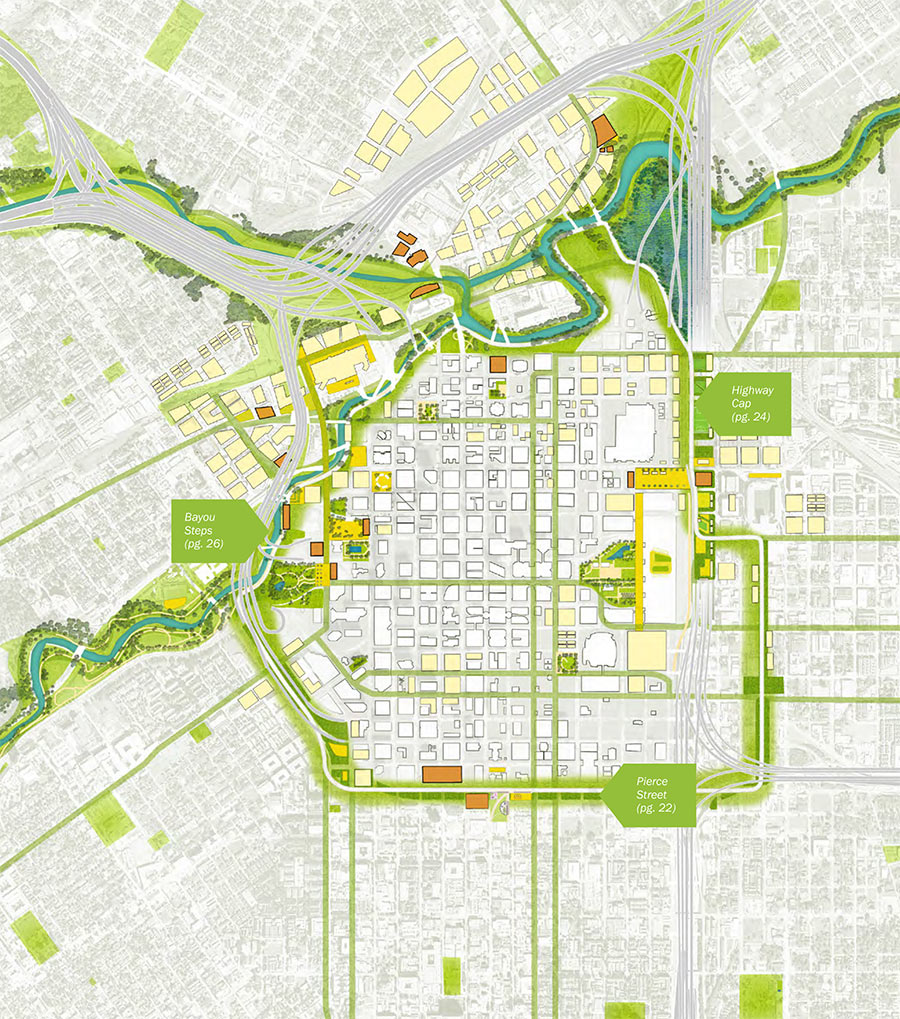

 “. . . This gave me an idea. That land under freeways isn’t good for retail or anything inhabited. But it could be a perfect place to dig down and create auxiliary stormwater detention facilities.
Yeah the water will be filthy, like your friends bikes usually are, but floodwater usually is. And as auxiliary detention they would only be used in extreme rainfall events (once or twice a year during so-called ‘hundred year’ storms).” [
“. . . This gave me an idea. That land under freeways isn’t good for retail or anything inhabited. But it could be a perfect place to dig down and create auxiliary stormwater detention facilities.
Yeah the water will be filthy, like your friends bikes usually are, but floodwater usually is. And as auxiliary detention they would only be used in extreme rainfall events (once or twice a year during so-called ‘hundred year’ storms).” [ “One conclusion I’ve made about the U.S., compared to European countries, is that we don’t use space efficiently. We’ve got all these open ditches, grass patches . . . along our roadways. So this Tokyo solution appeals to me.
But while I haven’t traveled extensively, I feel that selling/renting under-highway space to retail smacks of third-world. Would Houston ever go for that?
There is so much filth that washes off roadways and would filter into/onto these shops. A friend has his bike storage cage under the apartment driveway. It’s just a drive! yet the bikes always have a greasy blackness on them. Ever park in an airport garage for more than a couple days? Your car is filthy.
Maybe it’s just me, but I wouldn’t/couldn’t eat a taco made under the Pierce Elevated.” [
“One conclusion I’ve made about the U.S., compared to European countries, is that we don’t use space efficiently. We’ve got all these open ditches, grass patches . . . along our roadways. So this Tokyo solution appeals to me.
But while I haven’t traveled extensively, I feel that selling/renting under-highway space to retail smacks of third-world. Would Houston ever go for that?
There is so much filth that washes off roadways and would filter into/onto these shops. A friend has his bike storage cage under the apartment driveway. It’s just a drive! yet the bikes always have a greasy blackness on them. Ever park in an airport garage for more than a couple days? Your car is filthy.
Maybe it’s just me, but I wouldn’t/couldn’t eat a taco made under the Pierce Elevated.” [

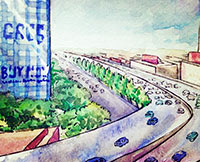 “I wish they’d rethink the billboard laws in Texas. Allow more and bigger billboards. The billboards could be taxed, and the money earmarked to our State Parks — they desperately need it. Scenic routes could be designated in certain places, and billboards banned there.
This would turn the buildings at the intersections of freeways into major advertising opportunities. It wouldn’t matter if the buildings lose money, the giant billboards on the roofs would make whatever profit the owners need. Or they might wind up demolishing the buildings to put billboards up in their place.” [
“I wish they’d rethink the billboard laws in Texas. Allow more and bigger billboards. The billboards could be taxed, and the money earmarked to our State Parks — they desperately need it. Scenic routes could be designated in certain places, and billboards banned there.
This would turn the buildings at the intersections of freeways into major advertising opportunities. It wouldn’t matter if the buildings lose money, the giant billboards on the roofs would make whatever profit the owners need. Or they might wind up demolishing the buildings to put billboards up in their place.” [